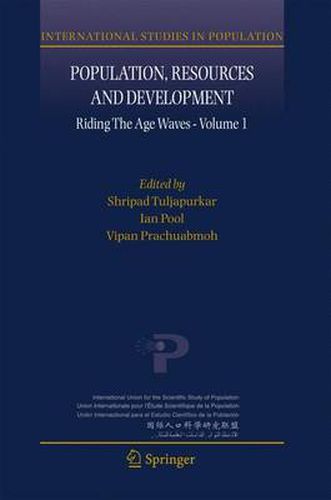Readings Newsletter
Become a Readings Member to make your shopping experience even easier.
Sign in or sign up for free!
You’re not far away from qualifying for FREE standard shipping within Australia
You’ve qualified for FREE standard shipping within Australia
The cart is loading…






This title is printed to order. This book may have been self-published. If so, we cannot guarantee the quality of the content. In the main most books will have gone through the editing process however some may not. We therefore suggest that you be aware of this before ordering this book. If in doubt check either the author or publisher’s details as we are unable to accept any returns unless they are faulty. Please contact us if you have any questions.
In the 21st century, the populations of the world’s nations will display large and long-lived changes in age structure. Many of these began with fertility change and are amplified by declining mortality and by migration within and between nations. Demography will matter in this century not by force of numbers, but by the pressures of waves of age structural change.
Many developing countries are in relatively early stages of fertility decline and will experience age waves for two or more generations. These waves create shifting flows of people into the key age groups, greatly complicating the task of managing development, from building human capabilities and creating jobs to growing industry, infrastructure and institutions. In this book, distinguished scientists examine key demographic, social, economic, and policy aspects of age structural change in developing economies.
This book provides a joint examination of dimensions of age structural change that have often been considered in isolation from each other (for example, education, job creation, land use, health); it uses case studies to examine policy consequences and options and develops qualitative and formal methods to analyze the dynamics and consequences of age structural change.
$9.00 standard shipping within Australia
FREE standard shipping within Australia for orders over $100.00
Express & International shipping calculated at checkout
This title is printed to order. This book may have been self-published. If so, we cannot guarantee the quality of the content. In the main most books will have gone through the editing process however some may not. We therefore suggest that you be aware of this before ordering this book. If in doubt check either the author or publisher’s details as we are unable to accept any returns unless they are faulty. Please contact us if you have any questions.
In the 21st century, the populations of the world’s nations will display large and long-lived changes in age structure. Many of these began with fertility change and are amplified by declining mortality and by migration within and between nations. Demography will matter in this century not by force of numbers, but by the pressures of waves of age structural change.
Many developing countries are in relatively early stages of fertility decline and will experience age waves for two or more generations. These waves create shifting flows of people into the key age groups, greatly complicating the task of managing development, from building human capabilities and creating jobs to growing industry, infrastructure and institutions. In this book, distinguished scientists examine key demographic, social, economic, and policy aspects of age structural change in developing economies.
This book provides a joint examination of dimensions of age structural change that have often been considered in isolation from each other (for example, education, job creation, land use, health); it uses case studies to examine policy consequences and options and develops qualitative and formal methods to analyze the dynamics and consequences of age structural change.